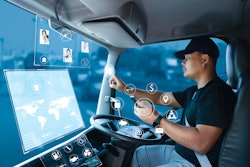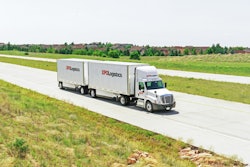
The global trucking industry is worth $700 billion annually, and trucking is the number one occupation in no less than 29 U.S. states. In addition, the sector has emerged as the key battleground in the development of automated driving.
The efforts of tech engineers had focused on the quest to build commercially-viable driverless automobiles, but in the last year there has been a shift toward the commercial vehicle sector. This shift can be seen in several key partnerships that have been signed between tech startups and the world’s largest truck manufacturers.
Waymo, often seen as the leader in driverless technology, has partnered with Daimler, the biggest truck manufacturer in the world. Meanwhile, TuSimple is teaming up with Traton, a subsidiary of Volvo, and Aurora — which is backed by Amazon and has recently acquired all of Uber’s self-driving tech — has joined forces with Volvo and Paccar.
In many ways, trucks are a more viable focal point for the development of the artificial intelligence (AI) for fully-autonomous driving. Long haul vehicles travel on long, monotonous highways, whereas the urban mobility navigated by automobiles and robotaxis is more complex.
The difficulty with developing the AI, centers around what engineers refer to as "edge cases" – those unique scenarios that are rarely encountered in your average vehicle journey. Put simply, there are more edge cases for the AI to deal with in complex urban environments.
Could the trucking industry reap the benefits of autonomy ahead of other vehicle sectors?
Cost savings with AT
There is a strong commercial case for greater investment in AT. One factor is the current limitation on human driver hours for safety reasons, which limits journeys to eleven hours. With autonomous trucking, the vehicle could be on the road for longer periods. It’s estimated that a trip from New York to L.A. could be cut from five days to two, resulting in significant cost savings.
AT is also being touted as a possible solution to the shortage of truck drivers. Although two-thirds of all U.S. consumer goods are transported by trucks, the American Trucking Association (ATA) predicts the driver shortage will reach 160,000 by 2028. By investing in greater levels of autonomy, the industry can solve the driver shortage while continuing to meet growing demand for deliveries.
According to advocates of AT, AI-based cruise control will save up to 10% in fuel costs. The optimized driving judgement of the AI can yield other savings, from reduced tire and brake wear to lower maintenance and insurance costs. The process of optimizing journeys will make further improvements as the AT will gather data from journeys and use this to enhance fuel efficiency.
How exactly will AT work? Rather than automating the entire journey, the current plan is for a hub-to-hub approach. This means the autonomous, or semi-autonomous, heavy goods vehicle would transport goods from one depot to another, along a relatively straightforward route. The more complex last mile of the delivery would then be performed by a human driver.
A common approach to the development of AT is the development of a computer ‘driver’. This can be retrofitted to an existing vehicle, rather than having to develop an entirely new vehicle from scratch. For example, autonomous start up Aurora – which has agreed to partnerships with Volvo and Paccar – has been developing a one-size-fits all system that can be installed on any vehicle.
The importance of conventional components
Vehicle original equipment manufacturers (OEMs) have always demanded high quality components. These vehicles must travel immense distances in all manner of weather conditions, placing significant demands on steering and suspension parts.
To be ready for the AT future, component manufacturers may need to raise their game. According to 2019 data from the Commercial Vehicle Safety Alliance, 538 out-of-service (OOS) violations were discovered during vehicle checks, in addition to a further 1,000 non-OOS violations. Problems included suspension defects or steering-related problems. The most common steering-related defects were when components were found to be worn, welded or even missing.
Although relatively rare, reducing the risk of component defects is of growing importance, as AT must demonstrate the highest levels of reliability and safety to become commercially viable.
It is not enough to demonstrate that an autonomous vehicle is as safe as a human driver, as can be seen from some of the high-profile accidents that have undermined efforts to develop driverless tech in other vehicle sectors. Whether we are talking about a steering universal joint or steering columns, opting for high quality parts helps reduce the risks of defects.
A decade ago, few would have predicted that long haul trucking would have been the focal point of new autonomous driving technologies. Now, the sector looks like it will reap the benefits of autonomy ahead of other vehicle sectors. Although the main focus will be on software development and testing of AI, parts suppliers also need to contribute by making sure their components will meet the unique challenges these vehicles will face.
Roger Brereton is head of sales at steering components manufacturer, Pailton Engineering.












